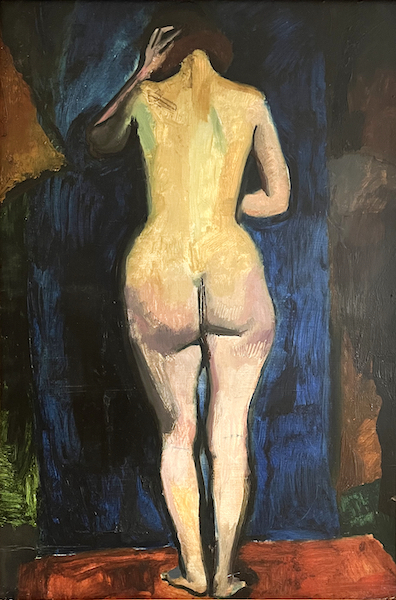Biography
At the age of fifteen Alexandre Trauner was a pupil of József Rippl-Rónai. In 1924 he enrolled at the Hungarian Academy of Fine Arts, where he was a student of István Csók. He was an important figure in the Hungarian avant-garde art of the 1920s. In 1925, together with György Kepes and Dezső Korniss, he founded the Progressive Youth Group, which was later joined by Ernő Schubert, Béla Hegedüs and Lajos Vajda. He took part in the magazine Munka edited by Lajos Kassák, and his drawings were published under the name DOR. He attracted attention mainly for his paintings, which occasionally combined photomontage with the simultaneous influence of Constructivism and Surrealism. In 1929, on the advice of István Csók, he left an increasingly rightward-looking Hungary and settled in Paris, where he shared a studio with the sculptor Frigyes Littmann for a time.
Besides painting, he also became interested in filmmaking. In 1930 he became assistant set designer to Lazare Meerson, and in the same year he took part as a draughtsman in René Clair's film Under the Roofs of Paris. His meeting with Jacques Prévert in 1930 marked the beginning of a lasting friendship and a fruitful working relationship. The collaboration between Marcel Carné, Jacques Prévert and ~ resulted in a number of highly successful films (Strange Drama, 1937; Misty Roads, 1938; By Dawn, 1939; Night Visitors, 1942; City of Loves, 1943-44). His sets and costumes gave him a special sense of style, colour and atmosphere. His drawings and paintings are not simply designs for films, but the true works of a good painter. His talent made him known overseas and he worked for many years in Hollywood with great artists such as Orson Welles, Billy Wider and John Huston. In 1960, he won an Academy Award for his set design for The Bachelorette. He was also credited with the set design for, among others, Do You Love Brahms (1960), Irma, Sweetheart (1962) and Fedora (1977). He returned to Europe in 1975, where he worked on a series of outstanding films until his death. He won the César Prize, the highest award in French cinema, three times: Monsieur Klein (1976), Don Giovanni (1978) and Subway (1984). His maquettes, set designs, drawings, paintings and photographs have been exhibited in several exhibitions. In his old age, he was often asked to work as an art consultant, which enabled him to work until his death. He is buried in the cemetery of the small seaside village of Ohonville, on the same site as his friend Jacques Prévert.

